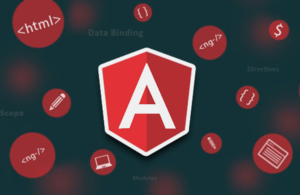Django views and URL mapping are essential components of building web applications. Views handle the logic of processing HTTP requests, and URL mapping connects specific URLs to corresponding views. Let’s explore them in more detail:
- Views:
- A view in Django is a Python function or a class-based view that receives an HTTP request and returns an HTTP response.
- Views encapsulate the logic for processing user requests, fetching data from the database, performing calculations, rendering templates, and more.
- Function-based views:
- A function-based view is defined as a Python function that takes an
HttpRequestobject as its first argument. - The function can perform any necessary operations and return an
HttpResponseobject or one of its subclasses.
- A function-based view is defined as a Python function that takes an
- Class-based views:
- Class-based views are defined as Python classes that inherit from Django’s
Viewor other class-based view mixins. - Class-based views provide reusable behavior through mixins and allow you to organize code using class-based inheritance.
- Class-based views typically implement methods like
get(),post(),put(),delete(), etc., to handle different HTTP methods.
- Class-based views are defined as Python classes that inherit from Django’s
- URL Mapping:
- URL mapping (or routing) connects specific URLs to their corresponding views, directing requests to the appropriate view for processing.
- In Django, URL mapping is defined in the project’s
urls.pyfile and, optionally, in individual app-levelurls.pyfiles. - Project-level URL mapping:
- The project’s
urls.pyfile contains the main URL patterns for the entire project. - Each URL pattern is defined using the
path()function, specifying the URL pattern as a string and the associated view function or class.
- The project’s
- App-level URL mapping:
- An app can have its own
urls.pyfile to define URL patterns specific to that app. - The app’s
urls.pyfile is typically included in the project’surls.pyfile using theinclude()function. - App-level URL patterns are defined in a similar way to project-level patterns using the
path()function.
- An app can have its own
- URL Patterns:
- URL patterns can include variables, allowing dynamic URL matching and passing parameters to views.
- Variables in URL patterns are specified using angle brackets (
<variable_name>), and the captured values are passed as arguments to the view. - Regular expressions can be used for more complex URL matching requirements.
- URL patterns can also include optional components and named URL patterns for easier referencing and reversing URLs.
- Reverse URL Resolution:
- Django provides the ability to reverse URL resolution, which allows you to generate URLs based on their corresponding view or URL name.
- Reverse URL resolution is useful for generating URLs dynamically in templates or views, avoiding hardcoding URLs.
Django’s URL routing and view handling provide a flexible and powerful mechanism for handling HTTP requests and mapping them to appropriate views for processing. For more detailed information, refer to the Django documentation on views and URL routing:
- Views: https://docs.djangoproject.com/en/3.2/topics/http/views/
- URL routing: https://docs.djangoproject.com/en/3.2/topics/http/urls/




